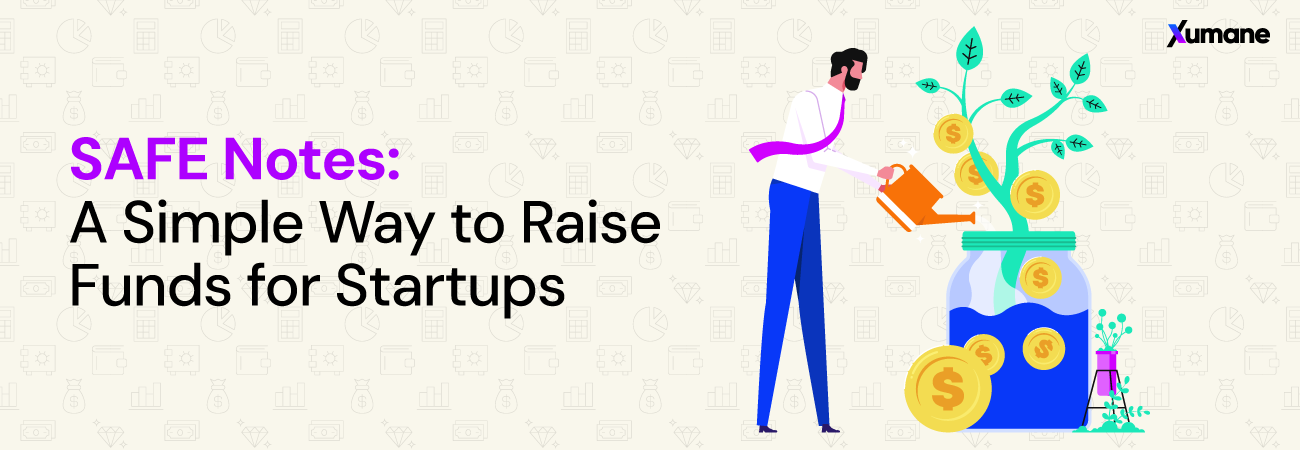
Subscribe to stay ahead with expert insights on ESOPs, smart ownership strategies, and more!
Editor’s Note:- Raising funds is often the biggest challenge for early-stage founders. This article breaks down SAFE notes, Simple Agreements for Future Equity, into clear, actionable insights for both startups and investors. From their origins at Y Combinator to their practical use in India, we’ve covered how SAFEs work, their advantages, risks, and when to use them. So whether you’re a first-time founder or an angel investor, this guide will help you understand why SAFEs have become the go-to fundraising tool for modern startups.
Ask any founder about their biggest struggle, and chances are they’ll say it’s raising funds and securing enough capital to keep the business running.
You need money to build, hire, and scale, but traditional fundraising structures like priced equity rounds can take months and rack up heavy legal fees. That’s why many founders and investors have turned to SAFE notes.
SAFE stands for Simple Agreement for Future Equity , and the name sums it up well. It’s a way for startups to take in money quickly, without having to lock down a valuation or negotiate every line of a term sheet.
A SAFE note is a legal agreement between a startup and an investor. The investor gives the company money today, and in return, they get the right to receive equity in the future, typically when the startup raises its next funding round. It’s not debt. Unlike a convertible note , a SAFE doesn’t accrue interest and doesn’t have a maturity date. The idea is to keep things clean and founder-friendly while still protecting the investor’s upside.
Did you know? The SAFE was created by Y Combinator in 2013!
Wondering why startups gravitate toward SAFEs? There are a few reasons:
For a founder, this means you can spend less time fundraising and more time building.
From an investor’s perspective, a SAFE note is not as secure as a priced equity round, but it comes with some unavoidable advantages:
Investors are essentially betting on growth, and the SAFE provides them with an easy way to do so. If you’re considering using a SAFE, here are the main terms you’ll come across:
These terms can shift the balance between founder-friendly and investor-friendly. A well-drafted SAFE note template can help you strike the right balance.
Many founders confuse SAFEs with convertible notes, as both defer valuation and convert into equity later. But there are big differences:
| Aspect | Convertible Notes | SAFEs |
| Nature | Debt instrument | Equity instrument (not debt) |
| Maturity Date | Fixed expiry period | No expiry date |
| Complexity | Involves more negotiation, and the terms are detailed | Simple and more straightforward |
For many early-stage companies, that makes SAFEs the cleaner choice.
Of course, SAFE notes aren’t perfect. Here are the tradeoffs.
| Challenge | Explanation |
| Investor uncertainty | No fixed equity stake until a priced round. |
| Founder dilution | Multiple SAFEs with different caps can be used. |
| No guarantee of conversion | If no priced round happens, SAFEs may never convert. |
This is why transparency with investors is key. Founders should model out how different SAFE agreements stack together. Most startups use SAFEs at the seed or pre-seed stage, often to raise anywhere from $100,000 to a few million dollars. They’re especially popular among accelerators, angel investors, and early-stage funds who want to invest quickly without dragging things out.
Globally, SAFEs have been adapted to different legal systems. For example, in India, founders often combine SAFE-style agreements with local compliance frameworks to make them enforceable.
However, once you have significant traction and institutional investors at the table, a priced equity round is usually more appropriate.
SAFE notes have changed the way startups raise money. They simplify the early fundraising process and allow founders to get capital in the door without drowning in legal work or valuation debates.
If you’re a founder, the key is to understand how SAFE note agreements work, how the terms affect dilution, and how multiple SAFEs might stack up down the road. For investors, it’s about weighing the simplicity and early entry benefits against the lack of downside protection.
When used thoughtfully, SAFEs can be a key instrument between the idea-stage hustle and the bigger venture rounds that fuel real growth.